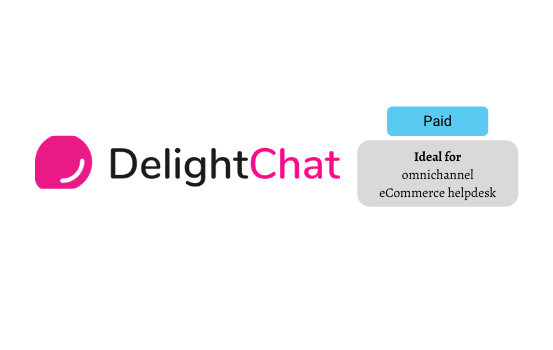46 of the Best Ecommerce Tools for 2025
- April 23rd, 2025 / 42 Mins read
-
 Harshitha Raja
Harshitha Raja

46 of the Best Ecommerce Tools for 2025
- April 23rd, 2025 / 42 Mins read
-
 Harshitha Raja
Harshitha Raja
You’ve just launched a new product line online and watched as your hard-earned traffic slipped away at checkout. Some customers hit payment errors, others abandoned carts when their preferred method wasn’t available. Sound familiar?
E-commerce isn’t just booming—it’s unmatched in scale. In 2024, global retail e-commerce sales hit an estimated six trillion U.S. dollars, and analysts expect that number to grow by 31% towards nearly eight trillion by 2028 (Statista). Yet with opportunity comes risk: 3.1% of global e-commerce revenue is lost to payment fraud, and payment-method localisation tops the list of challenges for retailers today.
That’s where the right toolkit makes all the difference. Whether you need to tighten security, speed up fulfilment, refine personalisation or offer every payment option under the sun, choosing the best e-commerce tools can turn those leaky funnels into closed deals.
In this guide on 40+ Best E-commerce Tools for 2025, you’ll discover solutions to tackle payment hurdles, crush fraud, automate your workflows and delight customers at every click. Ready to see which platforms can help you boost conversions, secure your checkout and stay ahead of rapid market growth? Let’s dive in.
We built the best eCommerce tools list to solve your problem
Created through exhaustive research and personal testing, we’ve divided the list into two categories to keep it simple. In it, you will find over 100+ rigorously tested eCommerce tools and eCommerce platforms so you can spend less time searching, and more time working.
These eCommerce tools are classified into free, freemium, paid and personally certified.
Launch
If you’re just starting off with your e-commerce store, you need your eCommerce tools to be cost-effective, easy-to-use and functional. But even before that, you need some place to build your store.
Choosing an eCommerce platform is a difficult decision. It’s a long-term commitment and there are many factors to take into consideration.
Factors like SEO, mobile-friendliness, scalability, and your technical skills play a part in the ultimate decision. We should also point out that we make no money through these referrals; everything you read is an objective analysis of the platforms.
Review scores, where available, were taken from ecommerceguide.com
The Best eCommerce Platforms to Build an eCommerce Store.
1. Shopify
Arguably one of the most well-known eCommerce platforms, Shopify has become synonymous with success. It truly is one of the most complete platforms around.
Shopify allows you to sell just about anything: goods, services or experiences.
With easy product organization, store customization, payment handling, and order tracking – all fully integrated into Shopify’s interface it is your one-stop-shop for an e-commerce store.
With a good idea and a few key additions, you could make millions using Shopify.
Design
Shopify has free, premium 100 inbuilt store designs, you can build a beautiful store without any designer or design skills. Their intuitive interface allows you to build a functional e-commerce store in a matter of minutes.
A testament to this easy-to-use interface is that Shopify powers over 2,540,597 live stores online stores in over 175 different countries. Merchants using Shopify have processed over $235.91 billion in e-commerce sales in 2023 alone. Shopify reported $7.06 billion in revenue for the year 2023, marking a 26.07% increase from its 2022 revenue of $5.6 billion.
Pricing
All of this excellence comes at a cost though – Shopify has no free plan.
Shopify gives you a 3 day free period and then you can pay ₹20 for 3 months and then opt for one of the four plans:
- Basic for solo entrepreneurs: ₹1,499INR/month
- Grow for small teams: ₹5,599INR/month
- Advanced for scaling team: ₹22,680INR/month
- Plus for complex business needs: ₹1,75,000INR/month
You get 25% discounts if you sign up for annual or biennial plans, but it is still one of the more expensive platforms on this list.
2. Magento 2 ( Adobe Commerce)
Magento Open Source is a powerful, enterprise-grade platform praised for its flexibility and scalability. Users on G2 highlight that its open-source nature gives you total control over your store—without licensing fees—and a vast community to tap into.
Key strengths include:
-
Customisation: Modify front- and back-end code to suit any business model.
-
B2B & Multistore: Built-in support for complex catalogues, custom pricing and multiple storefronts.
-
Robust Admin: Easy product, category, language and currency management right from the dashboard.
At the same time, reviewers warn of a steep learning curve, high server requirements and occasional speed issues—especially without careful optimisation or when running advanced features via paid extensions. Official support is limited since it’s community-driven, so plan for developer involvement.
Design
Magento eCommerce tools are open-source and can be downloaded and installed on your own servers. They also have additional plans that offer hosted cloud versions.
And if these words scare you, there’s a good reason for it.
Magento is a fairly advanced piece of software engineering. One that is almost impossible to set up if you have no web development experience. Magento (the parent company) doesn’t offer any custom designs for stores either, so you’ll have to shop for templates.
You can use Adobe’s Page Builder or any of thousands of third-party themes to create a polished storefront. G2 feedback notes that while theme integration and third-party modules (“I just added X plugin in minutes”) are straightforward, platform updates and API integrations (for catalogue imports or headless front-ends) can be complex and may require specialist developers.
Pricing
Adobe Commerce has 3 pricing models for both b2b and b2c businesses. You need to connect with the team to get your custom pricing:
- Adobe Commerce as a Cloud Service (SaaS) pricing
- Adobe Commerce on Cloud (PaaS) pricing
- Adobe Commerce Optimizer pricing
3. WooCommerce/WordPress
WooCommerce is the most popular WordPress e-commerce plugin, powering over 24% of all online stores. It’s free to install on any self-hosted WordPress site and comes packed with core features—product management, order tracking, payments and shipping configuration. G2 users praise its “ease of customisation” and vast plugin ecosystem, noting that WooCommerce can handle everything from dropshipping (via Aliwoo integrations) to multi-SKU product listings with conditional drop-downs.
You can’t really build an e-commerce store. With the right plugin though, this changes completely.
And that’s where WooCommerce comes into play. A hyper-popular plugin, WooCommerce gives you almost every feature you could need from an e-commerce store.
Design
-
Theme freedom: Any WordPress theme works, and hundreds of e-commerce-focused templates are available.
-
Plugin ecosystem: Official extensions like WooPayments, FiboSearch, TrackShipment and third-party gateways (Stripe, PayPal) add payments, smart search, shipping calculators and more.
-
Developer-friendly: Robust REST API makes data pulls, custom endpoints and headless implementations simple—favoured by programmers who “manually pull data” and agencies migrating clients from Shopify.
Pricing
How much does WooCommerce eCommerce tools cost? It doesn’t.
Assuming you already have a WordPress site set up, the plugin is absolutely free. You could enable some moderately-priced extensions, but the core product costs nothing.
The extensions are easy to use too, they’re as easy to enable as a regular WordPress plugin. Google Analytics, MailChimp and Freshdesk are just some of the available options.
4. BigCommerce
BigCommerce (Nasdaq: BIGC) is an open SaaS e-commerce platform used by tens of thousands of B2C and B2B brands across 150+ countries—including Ben & Jerry’s, Molton Brown and Vodafone. In Spring 2025 it earned G2’s Best ROI badge, reflecting strong returns on investment. According to G2 feedback, users value its scalability (from small shops to enterprises), extensive B2B and multistore capabilities, and out-of-the-box customisation—while noting that almost everything needed comes included, with few missing features.
Bigcommerce brands itself as an “all-in-one hosted eCommerce platforms”. All you have to do is signup through bigcommerce.com and you can get straight to business.
BigCommerce even comes complete with blogging tools, web pages, SSL payment, and impressive internal security.
Design
-
Themes & Page Builder: 50+ responsive, mobile-ready themes and a drag-and-drop storefront editor let you launch quickly without external design help.
-
App Marketplace: 800+ integrations—payment gateways (Stripe, PayPal), ERP and marketing tools (Klaviyo, Searchspring)—all install in minutes.
-
API-First & Headless Support: Robust REST and GraphQL APIs power headless storefronts and deep CRM/PIM integrations.
-
Global Readiness: Built-in multi-language, multi-currency and tax tools streamline international expansion.
G2 reviewers praise BigCommerce for “fast implementation,” “minimalist, user-friendly UI” and “excellent customer support,” making daily operations and integrations straightforward.
Pricing
Enterprise Plan: Single, custom-priced plan—contact sales for your quote. Includes unlimited staff accounts, advanced API rate limits, SLA-backed uptime and premium support.
G2 feedback highlights that while BigCommerce offers everything in one enterprise package, pricing transparency requires direct engagement with the sales team.
5. Squarespace
Squarespace is known for its polished design-first approach, empowering millions—from artists and entrepreneurs to established brands—to build stylish, easy-to-manage online stores. G2 reviewers highlight its clear, minimal user interface, “always-on-trend” templates and highly responsive support teams. Users praise how smoothly domains, digital assets and integrations (Mailchimp, SEOspace, Klarna workaround via custom code) slot into their sites, while the built-in analytics and resources library keep non-technical founders on track. A small gripe? Migrating from version 7.0 to 7.1 can require a redesign effort, and some niche integrations (custom fonts, certain widgets) may need workarounds.
Squarespace is one the most aesthetically impressive platforms around. It lives up to the company’s mission: To make ‘beautiful products to help people with creative ideas succeed’.
Squarespace is a drag and drop platform that began with a focus on making visually appealing websites. With time, they released new features that enabled companies to build e-commerce stores.
Design
Squarespace Commerce stands out with its library of over 100 award-winning, mobile-optimised templates, all editable via a simple drag-and-drop interface—no coding required. Every template includes integrated e-commerce tools, so you can list physical products, services or digital downloads, manage inventory, set taxes and configure shipping rules directly within the same platform. Built-in marketing and SEO features—such as an email campaign builder, on-site banner promotions, automatic sitemap generation and social-sharing options—help drive traffic and conversions without relying on third-party plugins.
And if you ever need assistance, you have access to a rich Resource Hub filled with step-by-step guides, video tutorials and 24/7 customer support, ensuring you can resolve issues quickly and keep your store running smoothly.
Pricing
Squarespace offers four core plans with annual savings:
-
Personal: $16/mo (save 36%) – basic website only, no commerce features
-
Business: $23/mo (save 36%) – full site plus basic commerce (3% transaction fee)
-
Commerce Basic: $28/mo (save 30%) – selling tools, 0% transaction fees, checkout on your domain
-
Commerce Advanced: $52/mo (save 27%) – all Commerce Basic features plus subscriptions, advanced discounts, and abandoned-cart recovery.
6. Wix
Wix has evolved from a simple site builder into a fully integrated online business platform. It offers enterprise-grade security, reliable hosting and fast performance, alongside built-in scheduling, payments, marketing and SEO tools. G2 reviewers highlight how quickly a site can go live—often within hours—and praise its no-code approach: “I registered my domain and launched in under six hours” and “their live chat support is always responsive.” Some note that while Wix covers the essentials (CRM, email campaigns, shopping cart), specialist tools (e.g. advanced email marketing, deep CRM) may require third-party integrations, and pricing tiers can feel confusing once add-ons like custom domains and premium apps are factored in.
Design
Wix’s drag-and-drop editor and library of 900+ professionally designed, mobile-optimised templates make it easy for non-technical users to create polished storefronts. Every template includes inventory management, tax and shipping settings, and supports digital downloads. Marketing and SEO are handled in-platform via automated sitemaps, meta-tag editors and email campaign builders. You’ll also find appointment-booking widgets, blogging capabilities, and a full-stack dev environment for custom code or headless setups. Built-in analytics and a mobile app let you monitor traffic and orders on the go, while an app marketplace extends functionality with hundreds of third-party integrations.
Pricing
| Plan | Price (₹/mo) | Key Features |
|---|
| Light | 250 | 2 GB storage, basic marketing suite, 2 collaborators |
| Core | 500 | 50 GB storage, standard marketing, 5 collaborators, e-commerce |
| Business | 900 | 100 GB storage, standard e-commerce, 10 collaborators, payments |
| Business Elite (Recommended) | 1 800 | Unlimited storage, advanced e-commerce, 100 collaborators, developer platform |
7. Ecwid by Lightspeed
Ecwid by Lightspeed makes it easy to turn any website or social media profile into a fully functioning online store—without rebuilding from scratch. Trusted by hundreds of thousands of merchants across 175 countries, Ecwid’s strength lies in its simplicity: it lets you sell via your own site, Instagram, Facebook, Amazon, and Google Shopping, while managing everything from a single dashboard. G2 reviewers praise its easy setup (“no coding needed”), responsive customer support, and seamless integrations with point-of-sale systems and email marketing tools. It has also received Best Software TOP 50 commerce products in G2 2025 Spring Report.
Users love the free features available even on the starter plan and the convenience of upgrading as their store grows. Some note that while additional feature requests are welcomed, major downsides are few and far between.
Design & Features
Ecwid’s intuitive backend offers inventory management, multi-channel selling, discount coupons, subscription products, multilingual storefronts, and abandoned cart recovery. Entrepreneurs appreciate the quick Facebook and Instagram integration, making it easier to widen reach without extra tools. With built-in analytics, automated tax calculations, mobile management apps, and an ever-growing App Market, Ecwid keeps scaling simple. Customer feedback frequently highlights how operational tasks are streamlined, making store management less stressful for busy small businesses.
Pricing
| Plan | Price (₹/mo) | Key Features |
|---|---|---|
| Starter | 450 | Up to 5 products, 70+ templates, store embed on any site, email support |
| Venture | 1200 | Up to 100 products, social media selling, live chat support, custom checkout |
| Business | 2250 | Up to 2,500 products, marketplace selling, staff accounts, abandoned cart recovery |
| Unlimited (Recommended) | 5700 | Unlimited products, POS integration, unlimited staff accounts, priority support |
All plans allow you to start quickly with a ready-to-use domain and can be upgraded easily as you scale. Prices exclude taxes where applicable.
8. PrestaShop
PrestaShop is a global open-source ecommerce platform that powers merchants in over 190 countries. Backed by MBE Worldwide, PrestaShop enables entrepreneurs to fully own and customise their online stores—without being tied to rigid templates or subscription-based ecosystems. Its strength lies in its flexibility, strong developer community, and wide module marketplace.
Users particularly appreciate the ease of implementation, the platform’s scalability (especially in early stages), and the one-time purchase model for extensions. However, reviewers caution that performance can dip as the store scales—especially when too many third-party modules are stacked.
Design & Features
PrestaShop is ideal for merchants who want full control over their store’s code and structure. With robust documentation and a huge ecosystem of modules, it offers nearly endless customisation. You get essential ecommerce features out of the box—product management, multi-store support, multilingual capabilities, and built-in SEO tools. The active global community is a major plus, frequently sharing new features and troubleshooting support. While integration of advanced features (like blogging) may require paid add-ons, once set up, the system supports stable and continuous growth.
9. Canva
As a Marketer, I can attest to the limitless power of Photoshop.
Canva is a freemium design platform that democratises visual storytelling. Whether you’re designing a pitch deck, social post, or a classroom handout, Canva’s intuitive interface and vast template library make it accessible to anyone—regardless of design experience. With powerful collaboration tools, brand kits, and one-click editing magic (like background removal), Canva is loved by marketers, founders, and students alike. Its freemium model makes it especially appealing for those just starting out, though more advanced teams may find the Pro and Teams plans worth the upgrade for brand consistency and workflow features.
Design & Features
Canva offers a drag-and-drop interface that’s clean, fast, and ridiculously easy to master. You get access to 2M+ templates, 4.5M+ free stock photos, and 1000+ design types—even on the free plan. Pro users unlock advanced tools like premium templates, 140M+ stock assets, resizing tools, AI-powered content creation, and up to 1000 Brand Kits. Teams can edit in real time, assign approvals, and generate on-brand content at scale. While it isn’t built for advanced animation or vector design like Adobe Illustrator or After Effects, it’s an all-in-one powerhouse for everyday creatives and content teams.
Pricing (India)
-
Canva Free – ₹0/year (for individuals)
-
Canva Pro – ₹4,000/year (for individuals)
-
Canva Teams – ₹4,000/year per person (for teams, min 2 users)
-
Canva Enterprise – Custom pricing (for large organisations)
Each tier adds more features for collaboration, brand management, and control. For example, Enterprise users get centralised brand governance, multiple teams support, advanced permissions, and indemnification for AI-generated content.
10. Design Wizard
If you want to access around 10,000 + templates, free of cost, then Design Wizard is the way to go. With about 1.2 million images in their database, Design Wizard allows you to make designs just the way you imagined them to be.
What’s more interesting is how it ensures that every video and image has been licensed which further protects you from any copyright complication. This is one of the productive eCommerce tools that one can get.
Now you can easily resize your designs, access to about 120 fonts, download transparent images and perform various other amusing features that will entice you.
You can reach here to understand the flexible pricing and how you can implement Design Wizard into your business fold right away.
10. WeTransfer
One of the challenges of working with a diverse team is the exchange of information.
While it is easy to send files back and forth between team members, it isn’t as easy as it could be. Neither is it free. Or quick.
WeTransfer helps you with all three. WeTransfer is a cloud-based platform that allows users to store, manage, and share files online.
WT makes it quick and easy to send large files to your colleagues and clients. Simply enter your recipients’ email, your email, upload your files and you’re good to go.
The interface couldn’t be any easier if you tried. And for absolutely free, you can send files up to 2GB back and forth all day.
Their paid plan (WeTransfer Plus) costs $12 a month. For that, you can send files up to 20GB at once, store and password protect files up to 100 GB and customize emails, profile, and pages.
Suggested Reading: Create a Chatbot: Why Your eCommerce Platform Needs a AI Chatbot
11. Slack
It’s no secret that I use Slack. In fact, I go out of my way to advertise that I use Slack.
In any workspace that I enter, nonprofit or otherwise, my first move is to get everyone on Slack. It just makes sense.
If you don’t have/use/know about Slack, I urge you to download it right now. It’ll make your life so much easier. It offers multiple messaging and organization tools to help your team stay aligned and productive.
Slack is filled with features that balance out simplicity with convenience. It is immeasurably better than any other workspace communication tool I’ve ever used. Whatsapp, Emails and phone calls don’t hold a candle to it.
The best part? It’s free.
Slack’s pricing begins at $8 per user, per month and it’s the largest plan is $15. This may be costly as you begin to scale, but we work in a team of 20 employees and Slack Free works just fine.
12. Draw.io
As we’ve mentioned, information is best absorbed when represented pictorially. Draw.io joins the eCommerce tools list.
Given the massive influx and complexity of modern business processes, companies need a better way to present this information. Ideally, for free.
Draw.io is probably the best tool in the diagram market right now. The use cases are almost endless.
You’re a programmer? UML diagrams to document all aspects of your projects. Both behavioral and structural.
You’re the Chief Strategy Officer? Enjoy SWOT diagrams to present an overview when planning for future business or projects.
You’re own an e-commerce store? Build tree diagrams to illustrate customer journeys and intent flows.
Free to use and free-to-license, Draw.io allows you to build almost any complex business processes and workflows.
13. Campaign URL Builder / Bitly
When Google decided to make the switch from HTTP to HTTPS, everyone rejoiced. HTTPS represented a new age of encrypted security. Bitly has been the most popular amongst eCommerce tools for its usability.
Everyone except one small community; the marketers who used Google Analytics.
HTTPS vastly reduced the amount of extractable data that marketers derived from GA. By virtue of every end to end network being encrypted, there was no way to understand where your customers were coming from.
To efficiently bifurcate your traffic, you can use GA’s tool – Campaign URL Builder.
You can attach metadata to each link that you feature externally. This allows you to determine the source, medium, name, and content each individual link that leads to your website.
14. Jasper AI
Jasper is an AI-powered writing assistant built for marketers, content creators, and businesses looking to scale content creation without compromising on quality or consistency. Whether you’re writing blog posts, crafting social media captions, or building high-converting email campaigns, Jasper helps you do it 2–5x faster. What sets Jasper apart is its deep marketing DNA—it’s trained on proven frameworks and real-world copywriting examples, not just internet text. With support for 30+ languages and an emphasis on brand voice training, it’s like having a well-briefed copy intern who never sleeps.
Design & Features
Jasper gives you a clean interface to ideate, write, and collaborate. You can create content using Jasper Chat, optimise for SEO, and generate visual assets using built-in AI image tools. It comes with templates for everything from product descriptions to ad copy, and “Brand Voice” settings ensure tone and language stay consistent across all content. Teams can manage access, collaborate in real time, and switch between workspaces. However, learning to prompt Jasper effectively takes a little trial and error—especially if you’re after nuanced tone or layered messaging.
Pricing (USD)
-
Creator: $39/month/seat
-
1 user seat, 1 Brand Voice
-
Jasper Chat, SEO Mode, browser extension
-
-
Pro: $59/month/seat
-
Everything in Creator, plus:
-
Up to 5 seats, 3 Brand Voices
-
Collaboration tools, AI image tools
-
10 Knowledge Assets, 3 Instant Campaigns
-
-
Business: Custom pricing
-
Unlimited usage, advanced admin controls
-
API access, custom workflows, team training
-
Enterprise-grade governance & custom style guides
-
15. Copy.ai
Copy.ai positions itself as the first Go-to-Market (GTM) AI Platform, offering a powerful suite of tools to automate and orchestrate content creation and GTM workflows. It goes beyond simple AI content generation by enabling businesses to codify their GTM strategies across departments like marketing, sales, operations, customer success, and finance. Whether you’re drafting content or running campaign workflows, Copy.ai is designed to scale output while reducing manual effort, making it a favourite for lean teams looking to do more with less.
Design & Features
Copy.ai offers prebuilt workflows as well as a Workflow Builder, enabling users to automate processes like prospect research, email personalisation, and content generation. The platform is extensible, with support for multiple LLMs (like ChatGPT and Claude), and integrates well with existing GTM systems. It supports a “Brand Voice” feature, and the Infobase allows organisations to store reusable context for more tailored AI responses. With tools built for both novice content creators and GTM strategists, Copy.ai helps teams scale with consistency.
Pricing (USD)
-
Free: $0/month
-
1 seat
-
2,000 words/month in Chat
-
Access to ChatGPT 3.5 & Claude 3
-
Brand Voice, Infobase
-
-
Starter: $49/month
-
1 seat
-
Unlimited words & chat projects
-
Access to all latest LLMs
-
Private community access
-
-
Advanced: $249/month
-
Up to 5 seats
-
2,000 workflow credits/month
-
15+ workflows each for sales and marketing
-
Full access to workflow builder
-
-
Enterprise: Custom pricing
-
Unlimited workflows
-
Advanced security, team features, and onboarding support
-
Growth
You’ve launched your store and you’re ready to go. Now it’s time to strap a couple of turbochargers to get that boost you need. And we have just the tools for you.
Below you’ll find a list of tools that you can use to largen your digital footprint. They’ll help you stay agile and respond quickly to opportunities and threats alike.
The tools listed are freemium, favoring on free. You don’t want to get tied down to a service you don’t like, but you can double down on what works for you.
16. Buffer
The first step to making your mark is to let other people know about it.
In the world of social shopping, making the right splashes in the right ponds can make all the difference.
Today, there’s a social media platform for almost every interest, and companies are expected to be on all of them. Manually scheduling content from each platform is almost impossible.
That’s where Buffer makes a mark for itself and reaches us to the eCommerce tools list.
With Buffer, you can create up to 10 posts in an automatic posting queue. You can also access tools for video/gif uploading, image creation, and optimal timing using their free version. Buffer also has an inbuilt analytics feature so you can gauge what platform is doing well.
Buffer has extensions for browsers that allow you to schedule content you discover. (Like this one, get Buffer and look at the top right of your browser. Go ahead, share it!)
You can also upgrade to their paid plan ($15 a month) for 100 posts on 8 accounts if you need to scale.
17. Startup HR Toolkit
It’s always appreciated when we can find a tool that minimizes or abolishes the trivial tasks which are heavily time-consuming.
We all know that the HR process is very elaborate and to draft a document for every stage is a very tedious task and eats up a lot of your time. With a spectacular tool like StartupHR Toolkit, you can use ready-to-use HR templates which are curated for different stages of the HR process.
This tool is specifically built for small companies with a small workforce.
Herein, you can easily get 200+ ready-to-use HR documents in one binding toolkit.
The toolkit has been created by SutraHR based on their tremendous experience in HR with relation to start-ups and well-established firms. You can easily customize the template as per your companies needs.
You can get a hold of the employee compensation template, exit process template, employee policy templates, TDS calculation template, and various others so that you can easily focus on the vital tasks instead.
You can click here to check the price of the toolkit and to get a glimpse of the companies who have optimized the Startup HR toolkit.
18. Loom
One of the worst self-service tools companies use is FAQ pages, which is much needed amongst the eCommerce tools you possess.
They’re slow, annoying and operate under the assumption that you know what the customer wants better than they do. When was the last time you enjoyed scrolling through 40+ pages of FAQ’s?
But it’s a necessary evil. Customers need extensive documentation for when they need help.
Loom disagrees with that assertion. And frankly, after using Loom, we agree.
Loom is a video capturing software helps you get your message across through instantly shareable videos. You can download it as an app and turn whatever is on your screen into a feature film.
For every 10 seconds of video you record, it’s equivalent to 81 seconds of typing. We use Loom all the time for our marketing and customer support.
Loom is absolutely free right now. They are going to launch Loom Pro, but I don’t see that being a detriment to an already great tool.
19. MailChimp
One of the fallacies e-commerce companies fall into as they grow is the constant chase of new customers. Mailchimp helps to resolve this problem and is one of the best eCommerce tools.
They usually do this at the expense of their existing customers. Big money flows into marketing, sales, and customer acquisition.
- Even though winning a new customer costs 6 times more than retaining an existing one.
- Even when the probability of selling to an existing customer is up to 14 times higher than the probability of selling to a new customer.
- Even as research shows that an increase in customer retention rates by 5% increases profits by anywhere between 25% to 95%.
Money that would have been better spent on customer retention, delight, and support.
MailChimp helps tackle this predicament. MailChimp is a marketing automation platform that helps you share email and ad campaigns with clients.
Send your customers emails based on triggers like abandoned carts, birthdays, product recommendations and order notifications.
MailChimp is incredibly liberal with their pricing. Their free plan gives you access to 12,000 emails and 2,000 subscribers.
If that isn’t enough, for just $10 a month you can send unlimited emails to unlimited subscribers with their “Grow” package.
Also, you can read this comparison table to understand which email marketing tool is best in the game and the features of each.
20. 123contacts
The best way to know what you’re doing right is by understanding all the ways you’re going wrong.
Many eCommerce tools don’t start taking feedback from their customers until after they’ve plateaued. This is when they’re looking for new ways to reinvent themselves, by which point it’s often too late.
User testing and data collection are among the most useful areas of commerce, and also the most costly.
123ContactForms aims to make surveys easier.
123 can do the basics well, but it also excels at the extraordinary. Create forms with SSL, captcha, and password-protection.
Use them for event registrations, polls, feedback, email registration, and quizzes. Using 123 you can even connect web forms to other online services to streamline data collection.
The service is capped at 100 replies a month. This isn’t a lot but is good enough for a core sample size of customers.
Related: WhatsApp Chatbot for eCommerce Platforms with 11 Use-Cases
21. Waveapp
One of the most important facets, when you’re growing your e-commerce business, is to make sure your finances are in order. It is one of the best accounting and invoicing eCommerce tools.
This usually involves business owners throwing themselves under stacks of paper at the end of every quarter. The alternatives are hiring expensive accountants or buying even more expensive accounting software.
Enter Wave, a fast-growing accounting and invoicing platform for small and online businesses. It’s also free, unlike its competitors Xero and Zoho books.
Wave allows you to handle the big picture problems like tracking income and expenses. It also auto-creates helpful infographics and reports.
It features a beautiful UI that keeps you up to date on your businesses expenses.
Additional features include direct depositing, payroll, yearly record keeping, invoicing, tax calculations, tax deductions, and receipts management.
You may need other software as you scale, but this is a substantial app for e-commerce stores who’re growing quickly.
22. Contact Out
The introduction of various products/services, features, and offers are constantly done to entice the audience. For that, a proper plan is drafted, setting a goal of the percentage of target audience you’d wish to convert into prospects.
You can only do so if you’re able to reach out to the interested customers effectively. Emails are the most convenient method to do so, with a response rate higher than that of messages sent on LinkedIn.
Contact Out allows you to get the contact details in the form of phone numbers or emails that you can use to reach out to the interested customers. Contact Out gives a satisfactory 97% accuracy to the contact information generated.
Used by the biggest of companies such as Nestle, Pwc, Microsoft, etc., Contact Out is highly recommended so that you don’t have to worry much about the means of reaching out to your prospective customers. You can use their ready-to-use templates and send bulk emails in one go.
Moreover, you can organize the customers you’ve reached out to on the basis of their response. This can be shared with other team members so that you can measure the effectivity of an email.
You can click here to register.
23. Mailtrack
One of the most basic metrics in email marketing is knowing if your emails are being read.
A lot of email platforms provide you with this option as a default, but you may not have the capital to invest in the Hubspot’s or Salesforce’s of the world.
Mailtrack is a free and unlimited tool that you can use to track whether your emails were read. It is one of the most popular eCommerce tools in the market.
Mailtrack works a lot like Whatsapp’s “Read receipts”. It uses ticks to determine the status of your emails.
(✓) means that your email has been sent, but not opened.
(✓✓) mean that your email has been opened.
You can download MailTracker as a Chrome Extension to trace emails for free forever.
Additional features include Full Email Metrics, Email & phone support, Real-time Notifications, Activity Dashboard, Click Tracking, Daily Report, Reminders.
24. Albacross
A number of people visit your website, some leave their contact details and some don’t. The number of customers would multiply if you were able to reach out to the people who have accessed your company website.
Albacross allows you to reach out to the people who have visited your website. You can take a look at all the potential clients that are interested in your business.
You just need to install a tracking code that will allow you to capture B2B leads from your inbound traffic. To get better clarity on your target market, you can select certain filters and narrow down on the potential customers.
Albacross has integrated its network with various other CRM tools that allow businesses to easily reach out to other companies/customers.
A lot of customers don’t generally leave their email addresses or even their contact details on the website, thereby, it becomes easy for you to reach out to them by tracking whomsoever has visited your company website.
Albacross has three kinds of packages available, namely, premium, business, and enterprise, wherein you get domain access, user access, required integrations, certain company leads per month, as per the respective plan you choose and various other facilities. You can click here to get more insight into the pricing modules of Albacross.
25. Google Analytics
Google Analytics is one of the most powerful free eCommerce tools tools you can get, period.
The only reason I didn’t recommend GA isn’t something you might try as you launch is that there’s a steep learning curve to it. It takes time, energy and a lot of head bashing.
Google Analytics is unprecedented in its capabilities. The insights you can derive from GA are unrivaled in depth and usability.
Google Analytics is a must-have for any eCommerce platforms.
Understand your site and app users to better evaluate the performance of your marketing, content, and products. Process and share your data quickly with an easy-to-use interface and shareable reports.
Google Analytics also has a massive community of users. So if even if it is hard to wrap your head around, there’s a very helpful resource-pool to tap into.
This combined with Google’s own training videos allows you to be confident and experiment to see what works best for you.
26. Kwfinder
It’s heartbreaking to write quality content and have it not rank well on Google. This should be the must-have eCommerce tools on your list.
While shooting in the dark might get you a few hits, it isn’t sustainable. You need to know exactly what to write about, and what keywords to use to maximize traffic.
Keyword research is the underpinning of good e-commerce marketers.
There are various tools in the market for keyword research. You’ve probably heard of Moz, SEMrush, Ahrefs. They’re great.
But I think KWfinder is better still.
KWfinder is one of the newest keyword research tools on the block.
An easy to use UI, competitive pricing and its comprehensive ranking algorithms, also makes it one of the most complete tools around.
KWfinder has a free version that is limited in its purview. The paid version will cost $29 a month and is worth every penny. For content writers, SEO specialists, SEO companies and marketers, KWfinder is the way to go.
Expansion
27. Zapier
Life is never as easy as it could be. There’s always something that could be done quicker, easier or with less friction. Zapier has been a popular eCommerce tools that are integrated with several apps.
This is the spirit with which Zapier was built.
Zapier is an online automation tool that connects your favorite apps.
Connect any of the 1000+ available apps to automate repetitive tasks, allowing you to move data between your tools automatically.
- For example, you can add a Zap between your CRM tool and Google Sheets to build automatic spreadsheets.
- Save any attachments you get through Gmail to your Dropbox account without having to manually download them.
- Stay in touch with prospects by adding form respondents from Typeform to your mailing list in MailChimp
Not only do we use Zapier inside Verloop’s product offerings, we use it in our daily lives too.
28. Sales Navigator
The world’s professionals all have one place they call home: LikedIn.
LinkedIn is often one of the most underrated tools for marketing professionals. But LinkedIn’s bread and butter is actually Sales.
Sales Navigator is one of the most powerful tools you will ever get your hands on.
If you have an effective and replicable sales pitch, Sales Navigator is the channel for that message.
Lead suggestions, enhanced searching, and monitoring activity will help you find the real decision makers in your target market.
At $65 a month, SN is one of the more expensive tools on this list. It has a free plan that runs for one month, but after that, you have to buy ‘credits’.
29. Inspectlet
For a lot of marketers, heatmaps and session playbacks are data-point gold. It’s the closest you can come to look over your customer’s shoulder. Every Digital Marketer can include this on their eCommerce tools list.
And InspectLet is about as good as it gets when you’re starting out.
Inspectlet helps you gain a deeper understanding of what visitors by observing their actions.
See every mouse movement, scrolling, clicks, and typing on your site. You can also run A/B tests, form analytics, and error logging.
InspectLet has a free plan that will give you access to 10,000 page views a month. Inspectlet is also designed to work alongside Google Analytics.
30. Fomo
Social selling is all the rage. And it works.
Customers don’t want to buy from businesses, they want to buy from people.
It helps companies validate that other people have bought from them and have seen real gains.
Imagine harnessing this power, all the time, for every customer.
FOMO.com does just that, in real time. Using unobtrusive notifications, it helps you increase sales and conversions.
By promoting a prospect currently in the sales flow about a customer who’s just bought a product, you incentivize the former to be like the latter.
FOMO is a paid tool. For $39 a month, you get 50,000 notifications to send out to your customers.
Related: Conversational Commerce: Redefining eCommerce
31. Sourcify
For e-commerce companies of any size, sourcing materials tend to be a challenge. Sourcify is one of the leading eCommerce tools that helps to ease your operational costs.
Factories rarely talk directly to customers and middlemen are difficult to track down.
This makes sourcing a considerable drain of time, resources and money. And it only gets worse with scale.
Sourcify is an all-in-one sourcing management platform that helps companies tackle this problem. Search for 100’s of manufacturers from Vietnam, India, China, and the Philippines.
From project submission to pre-production and even negotiating with suppliers, Sourcify sends your needs directly to factories, saving up to 32% on
Pricing is decided on a case-by-case basis, so we don’t know how much it’d cost you. But in a TechCrunch article, it mentions a $500 upfront fee and between 1-10% of the total order cost.
32. Upcounsel
You’ve established yourself as a fully fledged e-commerce store. But this scale comes with its own non-production issues, like e-commerce law.
And at some point, you will need help. And that’s where UpCounsel has you covered.
Upcounsel brands itself as the modern way to get legal work done. It acts as a liaison between companies and over 5000+ lawyers.
Be it agreements, patents, immigration, trademarks or general counsel, you can find legal help for marginal prices.
Work can be billed as a fixed fee or on an hourly basis depending on your needs. Pricing varies on a case by case basis.
33. Hello Sign
As you scale, you enter into bigger contracts with more companies. And with HelloSign, you can reduce your turnaround time (by up to 93%).
HelloSign is the easiest way to send, receive and manage legally binding signatures for your business of any size.
Complete your business related paperwork online through a user-friendly experience.
HS also integrates seamlessly with business apps like Slack, SalesForce, and Hubspot.
It has a free plan, but realistically you’re going to need the $13 a month deal to get work done.
34. Thankbot
When was the last time you threw out a handwritten letter? This is an creative eCommerce tools that let’s your customers feel special.
That’s the principle based on which Thankbot was built. Thankbot aims to reinvent direct mail advertising through handwritten letters.
This is basically how it works – You pay a flat fare per letter (you pay less the more you buy). For that amount, Thankbot will send a handwritten letter to a customer of your choice, including stationery, handwriting services, and postage.
The letters aim to improve loyalty, drive more referrals, increase revenues & boost your word-of-mouth marketing.
If I’m being honest, it isn’t the cheapest thing in the world. Their cheapest plan is $30 for 5 notes, pegged at $6 per note. But the great idea puts them in this list.
35. QuickBooks
If you’re expanding your online store, chances are you’re selling your products on multiple eCommerce platforms.
Keeping track of these stores from a centralized platform is a challenge.
Using QuickBooks extensive integrations, you can record your sales from nearly any channel. Regardless of whether it’s your own store, Amazon, eBay etc.
QuickBooks will help you track your inventory, keep track of your bills and even capture any expense by taking a picture of the receipt.
While there might be a bit of a learning curve, Quickbooks is ideal for a company at scale.
Prices start from $10 a month and go up to $30 a month. You can add advanced features like full-service payroll for an additional amount.
36. Beeketing
Beeketing is one of the most purpose-built tools for eCommerce tools.
It starts following your customers the second they visit your online store. And tracks them till they leave.
Using this data, BeeKeting generates relevant, personalized product recommendations and email marketing campaigns.
The product of all this is that Beeketing can increase in-store sales by up to 50%.
Beekeeting has 13 different apps to increase conversions, revenue and customer engagement.
And 9 of them are free, making it the deal of the century. Beeketing’s most expensive app of the four costs $30 a month.
37. Snov.io
Snov.io’s Email Tracker is great for those people hung up on email marketing and who care about what happens to the emails after they’re sent out.
Snov.io’s Email Tracker is a free browser extension that works inside your G-Suite and/or Gmail account. Snov.io can track if the email was opened, if the link inside your email was clicked, and how many times both those actions were undertaken.
It doesn’t even add a signature in your email, so the recipient doesn’t know they’re being tracked.
Snov.io has a full suite of marketing automation that you can pay for. Their offerings include an Email Verifier, Drip Campaign creators, and Technology creator.
All of this is yours for only $29 a month.
Maturity
38. Asana
Regardless of whether you have the words “Project Manager” in your job title, you handle projects on a day-to-day basis.
Different people handle the challenge of task-management differently.
Some people have walls and desks filled with sticky notes.
Others use extensive diaries to keep a track of their responsibilities.
Complex Excel spreadsheets and multi-colored Google Calenders for the modern man.
But as your e-commerce store grows larger, responsibilities pile on and work becomes more collaborative.
With Asana, you can organize all your team’s work (like goals, calendars, files, notes, and more) in one place.
We use Asana to manage everything from marketing campaigns and product launches to work requests and team goals.
Asana is a paid only app. It costs $9.99 per user, per month when billed annually.
39. Photoshop
Photoshop is one of the most iconic applications in the world. It is synonymous with excellence in design and professional photography.
So why is it one of the least prolific tools in most workspaces?
Two reasons. One, as we mentioned earlier, Photoshop is quite expensive. It also has a steep learning curve that even tech-friendly folk would find difficult.
So while I can attest to its complexity, I can also tell you it is hands-down the best photo editing software on the planet.
If you have a full-time Marketing or Design employee, invest in a Photoshop license for them. If they know how to use it, you’ll see instantaneous results.
Since Adobe dropped their one-time purchase pricing plan, Photoshop now operates using a subscription basis. Depending on where you live, you can get Photoshop for $10 a month, or the entire suite for $50.
40. Tradegecko
Inventory Management is one of the core challenges of running any retail store. An e-commerce store makes that more difficult.
Designed for high-growth e-commerce brands, Tradegecko helps distributors and manufacturers automate their operational processes.
TradeGecko has a lot of helpful features to help you run your business.
You can tackle issues like demand forecasting, order fulfillment, accounting, and sales reporting. TradeGecko also has a built-in CRM service.
TradeGecko integrates with platforms like Amazon, Shopify, Bigcommerce, Magento and WooCommerce. Access it anywhere using their plethora of apps and widgets.
TradeGecko is paid only, available as a monthly subscription. Prices range from $79 a month to $799.
41. Clearbit
While you can utilize a pool of analytics tools to understand your users’ behavior, what is your sales team using?
With over 200 million contacts with verified details, Clearbit is one of the most powerful sales tools today.
Using ClearBit, you can gain access to sales records with accurate, verified company and contact data. smarter scoring, better routing, and more revenue won.
Consider a common occurrence in most businesses – You have a target company you need to reach out to. You go to their LinkedIn page and try to find the right person to reach out to. Next you try and find their contact details. After scouring for hours, you find their email. You carefully draft your pitch, only to receive a “500 no such user” error.
When you give Clearbit a domain name also gives you the registered company’s name, funding raised, the position and number of employees, and market categories.
All this deeply personal data comes at a price though. Like $12,000 a year sort-of-a price.
42. Mixpanel
Data Scientists are some of the highest paid professionals right now, and their work is immeasurably important to tech companies.
But if getting a Ph.D. or Master’s seems like a lot of work, MixPanel is probably the next best thing.
MixPanel has over 20,000 customers worldwide, and over 30% of the Fortune 100 use it. So what does it do?
MixPanel measures and analyzes the actions or steps taken by people who enter your system or application.
This deep insight allows your team to make smarter decisions, faster.
MixPanel’s simple dashboard doesn’t require you to have a degree in engineering either. You can track acquisition, activation, retention, revenue and referral.
MixPanel has two pricing plans. While the free plan can keep a lot of people happy, their paid plan costs $999 a year.
43. SearchSpring
When it comes to an all-in-one analytics package, SearchSpring gives you a lot of bang.
SearchSpring is an enterprise-level site search and merchandising platform.
SearchSpring’s Search function is powered by NLP i.e., it analyzes the semantic construction of every search query.
It can also personalize the ways by which online shoppers search and navigate through product category listings and pages, tailoring them to their own preferences and personal tastes.
As a merchandising solution, the platform permits users to set up search and category landing pages.
Using SearchSpring, stores can control the ranking and relevance of their products. They can adjust product rankings to display products that are capable of promoting their business goals.
SearchSpring can gather data related to the activities and behaviors of online shoppers.
44. Segment
With all these tools in question, it’s easy to lose track of all the data you’re tracking.
From API integrations to multiple dashboards, it’s hard to manually keep track of all your tools.
Segment makes it simple to capture data from hundreds of apps, for any touchpoints.
Using Segment, you can send that data to any tool without having to learn, test, or implement a new API every time.
More than 15,000 companies big and small choose Segment to get more from their data. They process over 115 billion API calls every month
Test your implementation, review the data you’re collecting, and easily control where your data flow with tools for debugging and data management.
Segment has a free plan that includes 1,000 MTU from 2 sources. For $120 per month, you can up it to 10,000 MTU from unlimited sources.
45. API2Cart
If you’re looking for a solution to integrate with shopping platforms easily, faster and cheaper, then you should take a look at API2Cart.
The service offers a unified API to work with 35+ shopping carts and marketplaces such as Magento, PrestaShop, Bigcommerce, Shopify, OpenCart, Amazon, Volusion, etc. It allows to connect with stores based on any of the supported platforms, and retrieve, add, update, delete and sync all the necessary store data for further processing.
API2Cart is the best option for all sorts of e-сommerce B2B services, like mobile commerce, e-mail marketing, multi-channel software, shipping, order or inventory management systems, and others.
It has 5 pricing plans to fit the needs and budget of different size businesses.
46. DelightChat
In the digital age, brands and customers are online on every social media channel. Providing fast and friendly support, no matter the channel, has become the default expectation. In fact, 47% of customers say they’ll stop buying from a company if they have a poor experience. To meet your customer’s high expectations, you need an omnichannel support inbox like DelightChat.

DelightChat lets you answer customer queries from every channel – Instagram post & ad comments, Facebook Messenger, Facebook post & ad comments, Email, WhatsApp and Live Chat – from one place. No more switching back and forth between browser tabs just to see your latest customer messages!
With an easy-to-use interface, powerful features to manage your customer support and affordable pricing, DelightChat is the best choice for modern eCommerce & DTC brands to deliver delightful support experiences.
If you are looking to automate your customer support and gain huge ROI, explore our product.
Ready to enhance my customer support?







